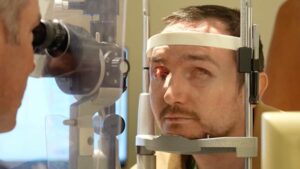Think Therapy Is Only for the “Deeply Troubled”? 5 Surprising Myths Debunked by Science
Here’s a question: If therapy is just “talking,” does that mean my 10-minute rant about my neighbor’s lawn gnomes counted as a breakthrough? Spoiler alert: it did not. That’s just one of the many bizarre—and, okay, sometimes hilarious—myths floating around about therapy. Let’s face it, whether you picture a serious-faced shrink in an office or your own wild attempts to psychoanalyze your dog, you probably have some preconceptions about mental health treatment. But in a world where more Americans are seeking therapy than ever before (and not just because their cat ignored them at breakfast), these old misconceptions are holding way too many people back .
Curious how gossip, cost, and gender stereotypes still shape the decision to get help—and how actual science leaves these myths in the dust? This article peels back the curtain—armed with research, real talk, and even some wallet-friendly ways to get the care you deserve. Ready to rethink everything you think you know about therapy? Lean in, laugh a little, and dive into the myth-busting mayhem. LEARN MORE

5 common therapy myths—and the research that disproves them
In the United States, receiving mental healthcare is quite common. More than 1 in 5 U.S. adults (21.6%) received mental health treatment in 2021, with the rate closer to 1 in 4 (23.2%) among those under 45.
The percentage of those seeking treatment has steadily increased since 2019, but stigma still keeps many people from accessing the care they need. In 2022, over 60% of those surveyed by the Kaiser Family Foundation and CNN said that stigma and shame pose barriers to care—second only to issues of cost and insurance.
There are a lot of myths that can discourage people from seeking help or leave them uncertain about the value of therapy. From the belief that therapy is “just talking” to fears about the duration of treatment, misconceptions can obscure the wide range of benefits therapy offers.
In reality, therapy is an evidence-based process that can lead to real change, even in a short amount of time. And it can be used to treat a wide range of mental health issues, from anxiety and depression to more serious conditions like obsessive-compulsive disorder (OCD) and personality disorders.
To address common myths about therapy, Charlie Heath looked at the data—including research on how long therapy takes to work and its effectiveness in treating different mental health conditions. The article also includes some tips about how to find affordable, in-network therapy and the benefits of online treatment options.
1. Myth: Therapy is only talking; it doesn’t really help.
Fact: Therapy involves more than just talking. Many therapy approaches include evidence-based techniques, which are proven to help individuals address underlying issues, change negative behaviors, and develop healthier coping mechanisms.
Take, for instance, cognitive behavioral therapy (CBT), which is one of the most extensively researched and widely practiced forms of psychotherapy in the world. Studies consistently show that CBT is effective for conditions like anxiety, depression, and post-traumatic stress disorder (PTSD). Working with a therapist trained in CBT is not “just talking.” It’s using a technique proven to help people change negative thought patterns and behaviors with real-life, actionable skills and coping techniques.
2. Myth: Therapy takes years to work.
Fact: While the length of therapy varies depending on the person and the type of treatment, many people experience significant improvements in a shorter time span. The American Psychological Association (APA) writes that, on average, half of patients report recovery after 15 to 20 therapy sessions. This means that (for those attending sessions once weekly), therapy can lead to meaningful change in 4 or 5 months. For people with acute challenges, therapy can be effective even quicker. For example, CBT, which focuses on specific issues, typically requires just 12 to 16 weeks.
However, it’s worth noting that more chronic issues or co-occurring conditions may require a longer course of treatment to achieve sustained improvement—often around 12 to 18 months, according to the APA. It’s important to have an open conversation with your therapist about your goals and progress, as therapy length can be adjusted based on your needs.
3. Myth: Therapy is only for people with severe mental health problems.
Fact: Therapy can benefit anyone, not just those with severe mental illness. Research shows that therapy can help with mild conditions like stress and relationship issues. In fact, in Norway, health authorities now recommend psychological interventions as the first line of treatment for mild to moderate depression rather than medication. Also, experts point out that psychotherapy has been shown to reduce relapses of anxiety and mild depression, offering short-term relief and enduring benefits.
4. Myth: Therapy is only for women.
Fact: Therapy is beneficial for individuals of all genders. Although it’s true that men are often less likely to seek help for mental health issues, research shows that therapy can significantly improve emotional health, reduce stress, and enhance relationships for men as well. In fact, while men typically have lower rates of seeking help for mental health difficulties, they have an increasing need for support, according to the study. For this reason, experts suggest that male-focused interventions—like using male role models and providing psychoeducation to people of all genders—could improve therapy-seeking behaviors among men.













